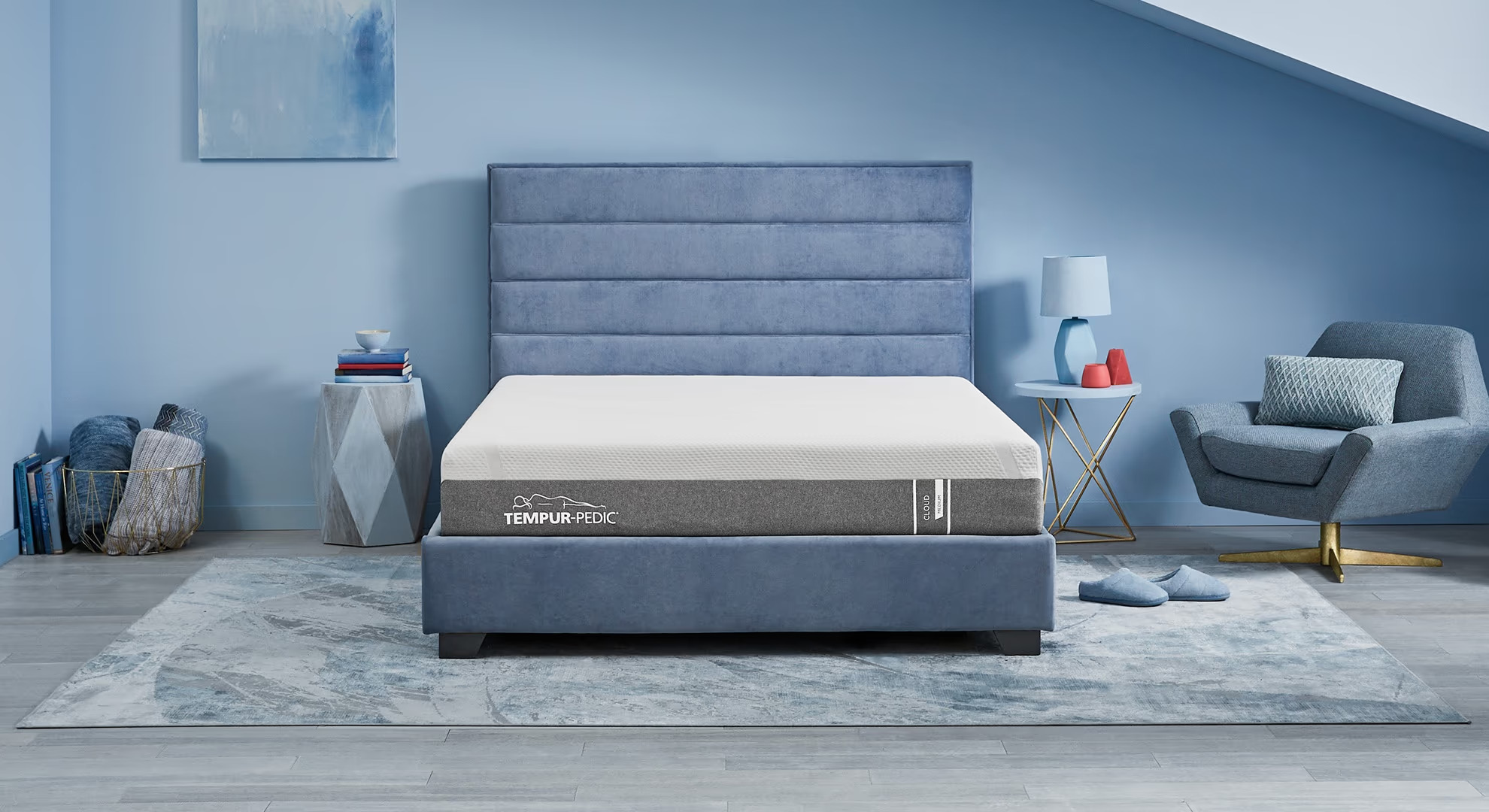TechRadar Verdict
The Tempur-Cloud mattress has a quicksand feel will divide opinion. On the plus side, motion isolation is outstanding, and so is pressure relief. It'll work well for lightweight side sleepers and as someone prone to tossing and turning, I found it helped promote a more restful night. The people who love Tempur-Pedic really love it, and there's very little else like it on the market. However, I found this mattress difficult to move about on and at times unsupportive, and I'm not sure it quite justifies the price.
Pros
- +
Unbeatable motion isolation
- +
Hugging memory foam feel
- +
Excellent pressure relief
- +
Great for restless sleepers
Cons
- -
Too soft for back/stomach sleepers
- -
Edge support is weak
- -
Can run a little warm
- -
Extras are underwhelming
Why you can trust TechRadar
Tempur-Pedic Tempur-Cloud mattress: Two-minute review
The Tempur-Pedic Tempur-Cloud is a 10-inch tall mattress available in all-foam or hybrid versions. For this review I tested out the former, sleeping on it for three weeks and also asking a panel of others to try it out and share their thoughts. The aim was to see how it compares to the rest of the best mattresses on the market, and if it justifies the premium price tag.
Like all of this brand's beds, the Tempur-Cloud uses Tempur Material – a kind of high-end foam that delivers a sink-in, deep contouring feel. Tempur-Pedic is widely considered to be one of the best luxury mattress brands, but it won't be for everyone.
This mattress has a medium firmness (I'd rate it a 5.5 out of 10, with 10 being a rock). That, combined with the squishy feel, makes it a great choice for lightweight people and side sleepers seeking a bit of extra softness. The pressure relief here is excellent. It also has perhaps the best motion isolation of any mattress I've slept on. I didn't toss and turn as usual during my review period, and I couldn't feel my husband getting in and out of bed, either.
It will be too soft for most back or stomach sleepers, who will find their hips sinking too low into the surface. Ditto anyone who weighs above average and needs a bit of extra support. And while the slow-moving memory foam will be amazing for some people, it might prove problematic for those with mobility issues – the deep sinking feeling on the edges of the bed made me feel like I was heading towards the floor, which isn't ideal.
All of Tempur-Pedic's mattresses sit in the premium price bracket, and you're mostly paying for the high-end, own brand foams. It's pricier than most of today's best memory foam mattresses, and to be honest, I feel that Tempur could do more to justify that price – especially with regards to things like delivery (which is only to your door) and trial length (short at 90 nights). However, if you want that unique Tempur mattress feel, this is the most affordable of the lineup, and for some people it'll be worth it. Read on for more detail in my full Tempur-Cloud mattress review.
In the UK? This mattress is only available in the US. For a taste of what to expect from the UK range, head over to our Tempur Hybrid Elite mattress review.
| Section | Notes | Score |
|---|---|---|
| Comfort | Medium firmness, with sink-in, quicksand feel. Lots of pressure relief but will lack support for some people. | N/A |
| Value | Premium price bracket, even with semi-regular discounts. Other brands deliver more for less. | 2.5/5 |
| Design | Available as all-foam (tested here) and hybrid. Includes proprietary Tempur Material. Cover not removable, no handles. | 3.5/5 |
| Temperature | Can trap heat a little, so not the best for hot sleepers. | 2.5/5 |
| Motion isolation | Outstanding. Absorbs movements completely. | 5/5 |
| Edge support | Very poor – edges feel unsupportive and take a long time to regain shape. | 2/5 |
| Customer experience | 90 day trial, free delivery. Nothing especially generous for this price. | 3/5 |
Tempur-Cloud mattress review: Design
- 10" tall mattress made in the US
- Available in all-foam (reviewed here) or hybrid versions
- Cover is super-stretchy and designed to be breathable
The Tempur-Pedic Tempur-Cloud is a 10-inch tall mattress available in all-foam (reviewed here) or hybrid versions.
Sign up for breaking news, reviews, opinion, top tech deals, and more.
The top of the mattress is wrapped with a polyester-blend, soft cover that's designed to be ultra-stretchy – so you can get the full benefit of the foams beneath – as well as breathable. It's not removable, so you'll want to add one of the best mattress protectors to make cleaning easier and guard against spills. There are no handles to help with maneuvering.
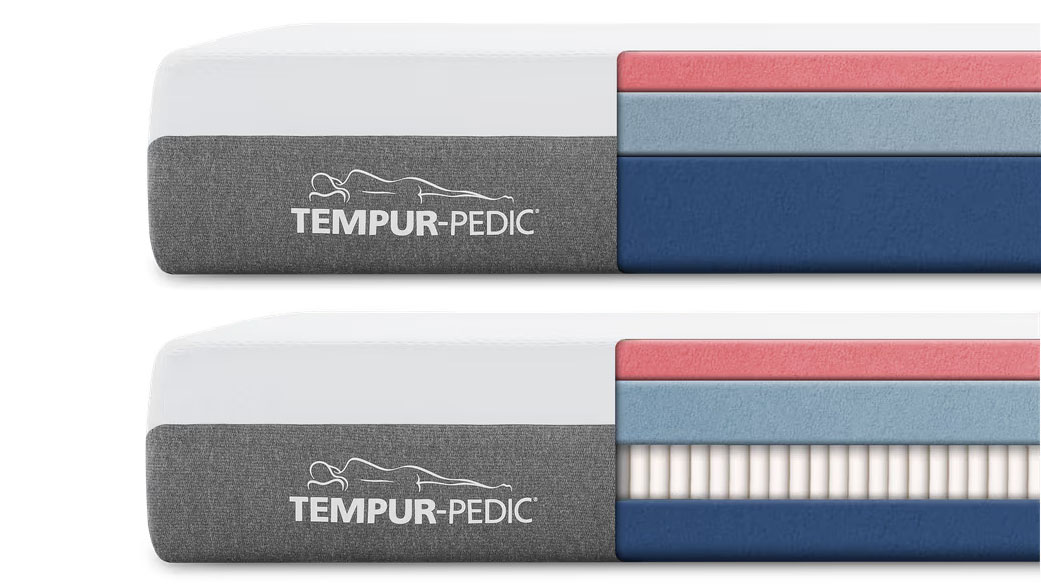
Next up you'll find a 'comfort layer' made from an updated version of Tempur Material. This is a proprietary material that the brand is adamant is not memory foam, but we would class as memory foam (it certainly has that slow-moving, sink in feel that most would associate with classic memory foam). This top layer is designed to cushion pressure points and alleviate muscle pains and achy joints.
This softer top layer sits above a layer of slightly firmer Tempur Material, to add more support and prevent the whole thing from becoming too squishy. If you opt for the hybrid, you'll find a layer of pocket coils next. These will add a touch of bounce as well as creating space for air to circulate within the mattress. Finally, there's a sturdy polyfoam base that supports layers above it. It's thicker on the all-foam version, to make up the height.
- Design score: 3.5 out of 5
Tempur-Cloud mattress review: Price & value for money
- Premium priced mattress, sometimes 30% off over sales events
- Cheapest option in the Tempur-Pedic mattress range
- Not the best value for money
The Tempur-Cloud mattress is the cheapest in the Tempur lineup, but it still sits firmly in the premium price bracket. For comparison, at MSRP a queen sized Cloud is $1,999, the Adapt is $2,199 and the Breeze is $4,599. If you're smart, and flexible about when you buy, you can avoid those prices. Tempur-Pedic mattress sales tend to crop up around major shopping events, and usually knock 30 per cent off MSRP.
Here are the list prices for the main sizes of the Tempur-Cloud mattress (all-foam):
- Twin size: MSRP $1,699
- Full size: MSRP $1,899
- Queen size: MSRP $1,999
- King size: MSRP $2,399
Good times to shop include the Presidents' Day mattress sales in February, the Memorial Day mattress sales in May, the 4th of July mattress sales, the Labor Day mattress sales in September, and of course the Black Friday mattress deals in late November. Often, those events will bring with them that 30 per cent discount.
On paper, it's hard to see where this extra expense is coming from. The design is pretty standard – the layers diagram for the Tempur-Cloud would look very similar to the Nectar memory foam mattress or Cocoon Chill mattress, both of which are significantly cheaper.
What about the extras? Well, they're nothing special, either: you've got a 90 night trial, which is shorter than pretty much every other big bed brand, and a 10-year warranty, which is standard. Shipping is free, but that's common, and there are no perks such as setup and packaging removal to sweeten the deal.
The only real point of difference is the inclusion of Tempur Material, which has a fairly unique feel, and which you won't find in any other mattresses. It's this material that has earned Tempur a reputation as one of the best luxury mattress brands around.
You're definitely paying for the brand name a bit, too. Many of the other reviews mention being loyal Tempur-Pedic customers. If you love that unique Tempur mattress feel, that's what you'll need to pay (unless you just opt for the topper – which you can read about in our Tempur-Adapt topper review), but I wouldn't say it's amazing value for money.
- Value for money score: 2.5 out of 5
Tempur-Cloud mattress review: Comfort & support
- Medium sleep surface with a sink-in feel and excellent pressure relief
- Best for lightweight side sleepers, lacks support for heavier people
- Gooey, slow-moving foams, takes a long time to return to shape
Climb into bed with the Tempur-Pedic Tempur-Cloud mattress, and you'll sink in immediately and keep going, with the foams contouring around your joints. That's often referred to as a 'quicksand-like feeling' in the world of mattress reviews and testing.)
In terms of actual firmness, Tempur-Pedic says this is a 'medium', which would be about a five or six out of 10 on the firmness scale. I'd agree with that, and judged it to be a 5.5. I placed a 12lb kettlebell in the middle of the bed and it sunk in two inches. More so than the softness, the deep sinking feeling of this mattress threw me for a loop.
The brand website says the foam is designed to be responsive but I'd disagree with that. During my testing, I pressed down on the mattress with my hand, and it took about 20 seconds for the surface to completely return to its original shape.
That quicksand feel is divisive – some people will love it, while others hate it. It's a characteristic associated with memory foam mattresses, but it's really pronounced here. I've tested other all-foam bed-in-a-box mattresses that felt much more responsive.
For me, there were some benefits – I usually shift position a lot at night, whereas I tended to stay in place a lot more while sleeping on the Cloud. However, it also made it harder to get out of bed. I'd imagine someone who is pregnant, has mobility issues, or who needs to get up a lot throughout the night might be thrown off by this aspect of the design.
For reference, I'm of average build and height, and predominantly a side sleeper, and I like to put a pillow between my knees for comfort and pressure relief at night. I mostly tested this mattress by sleeping on my side but I also experimented with lying on my stomach and back for naps.
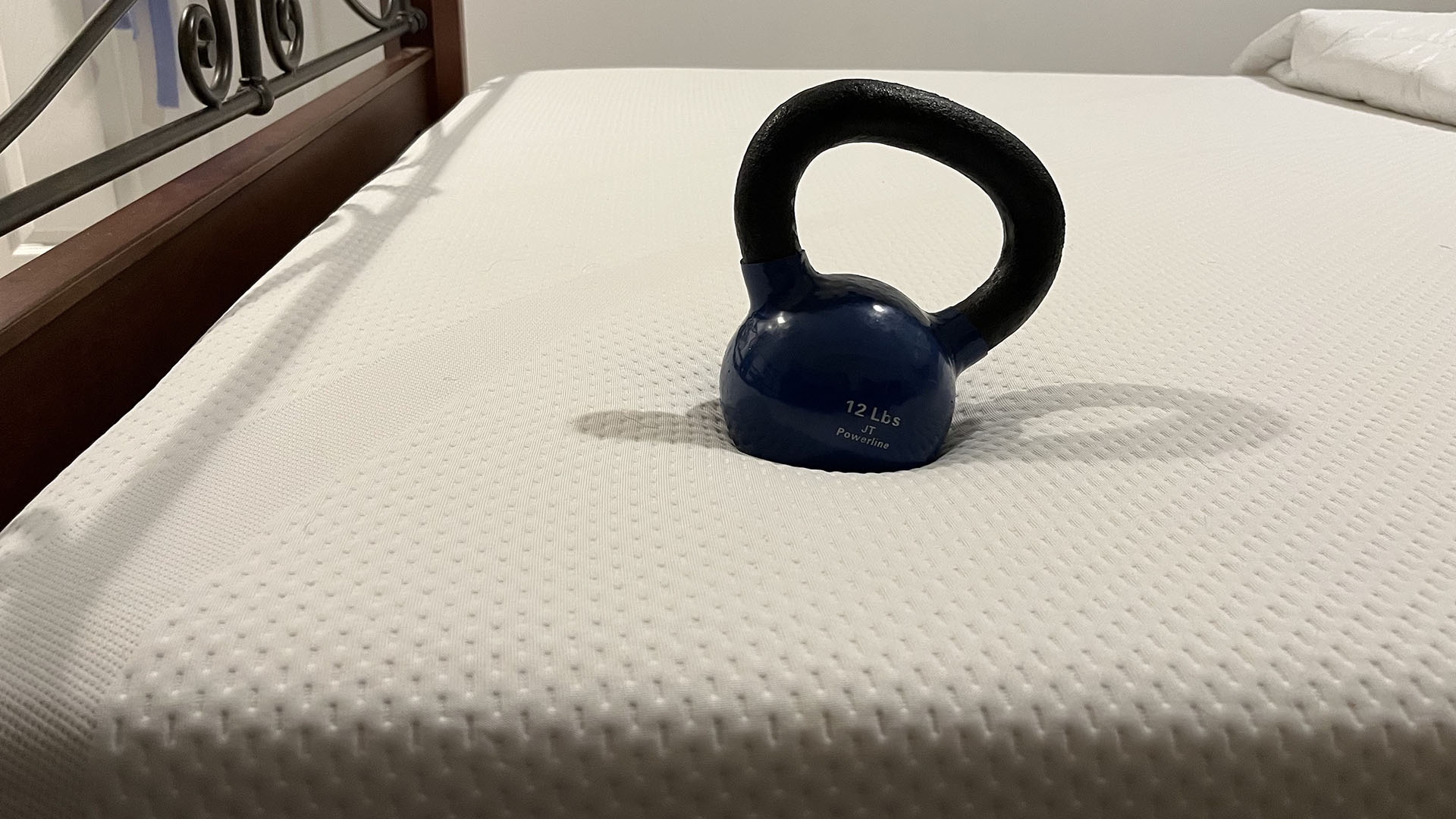
Although the deep sinking feeling did take some getting used to, I found this mattress fairly comfortable in my usual side sleeping position. I felt like my shoulders and hips were supported, and the contouring prevented pressure from building up uncomfortably. The best mattresses for side sleepers tend to be medium or medium-firm (five to seven-and-a-half) out of 10) to allow the hip and shoulder to sink in a little, while still keeping the spine neutrally aligned.
It was less comfortable when lying on my back. When settling into a reclining position to scroll through my phone or read a book before going to sleep, my butt would sink all the way down while my legs felt like they rested on top of the mattress and my top half almost felt like I would fall back, even though I was propped up on pillows.
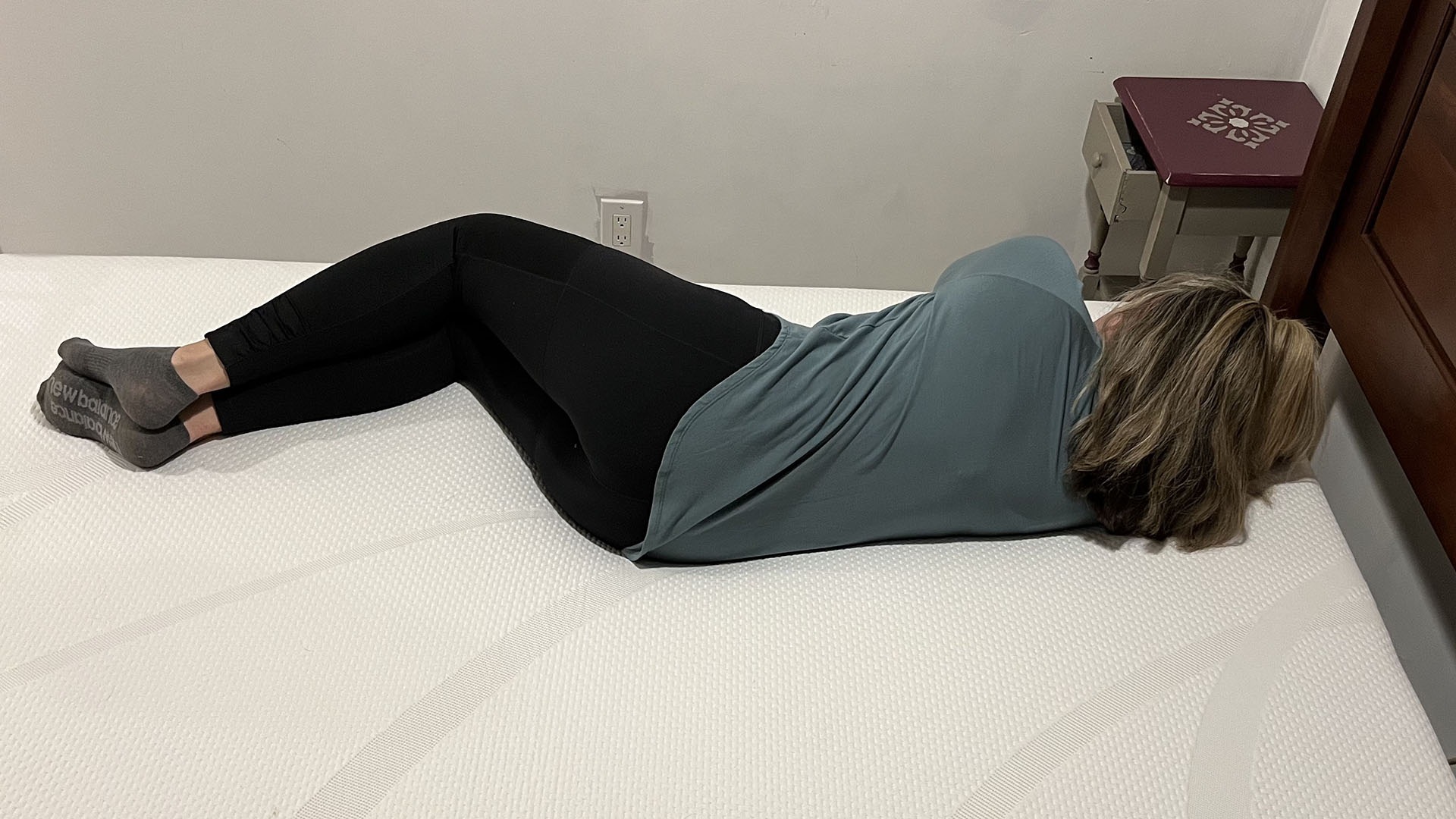
I couldn't really sleep an entire night on my back, because my butt and hips felt like they were sinking too far into the mattress. This would be even more of an issue if you're on the heavier side, and would likely lead to back pain over time. Typically, we recommend medium-firm to firm mattresses for back sleepers (so at least a seven).
It was a similar situation when I lay on my stomach – my hips sank in deep. This isn't really ideal, as it puts strain on the spine. Again, stomach sleepers usually need a firmer mattress to ensure their back is properly supported.
Because comfort is subjective, I also asked some others to give this mattress a go and share their opinions. My petite, average weight mom tested it on her back and she said she thought it was comfortable once you settled in and would give it a 3.5 stars out of 5 for comfort. My dad is an average height, heavier-than-average man who is a side sleeper and he thought it was comfortable once he settled in as well. He gave it 4 out of 5 stars but noted the lack of edge support immediately (more on that in the performance section).
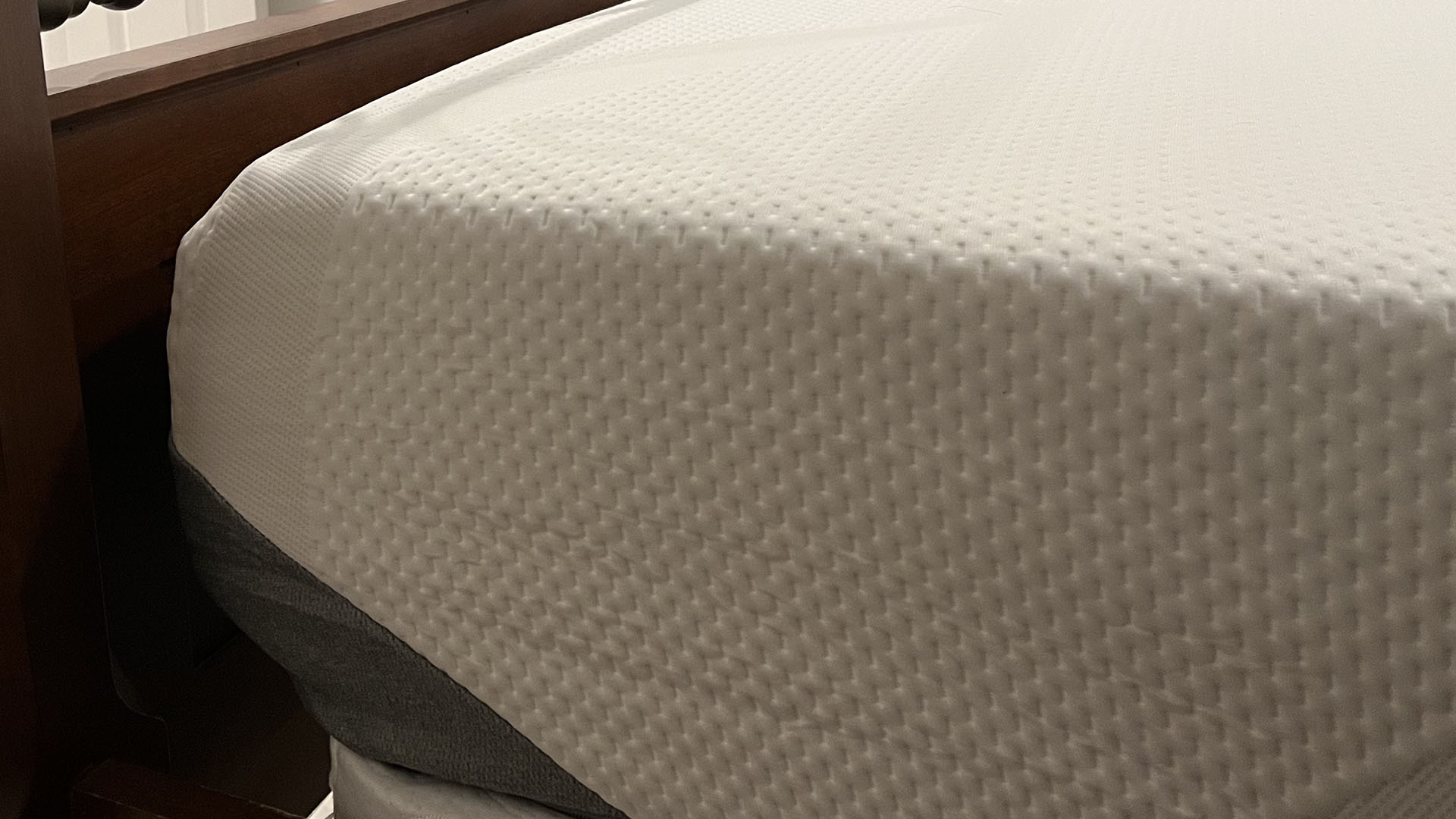
In general, softer mattresses tend to work best for lightweight people, who will benefit from the extra cushioning. The heavier you are, the more support you'll need and the firmer your mattress should be. Personal preference does come into it, too, as does sleep position. I tend to get on best with mattresses that score around seven out of 10 in terms of firmness.
Overall, I'd say the Cloud would be best suited to lightweight side sleepers, although it may also suit some average weight side sleepers, if they have a preference for a softer feeling mattress. Heavier weight people, as well as back or stomach sleepers, should approach with caution, as they likely won't find the support they need here.
Tempur-Cloud mattress review: Performance
- Temperature regulation is poor, not the best for hot sleepers
- Edge support is terrible
- Motion isolation is excellent – great for couples and light sleepers
As well as general comfort and support, there are other factors that affect your experience with a mattress. In this section of the review, I'll be assessing the mattress' temperature regulation, edge support (how firm it is on the sides of the bed and bottom), as well as the motion isolation. Here's how I got on…
Temperature regulation
The Tempur-Pedic website says the mattress offers superior breathability and airflow compared to 'other compress mattress brands', but overall I wasn't too impressed with the temperature regulation here.
I tend to sleep neutral, and although the Cloud didn't feel immediately warm, I would occasionally wake up feeling clammy during my review period. My sister runs hot and she said she woke up feeling sweaty during her one night on this mattress.

That's more notable because I tested this memory foam mattress out in a basement bedroom so it was cooler than other areas of the home. For context, the outside temperatures were 30 to 60 degrees Fahrenheit during my testing period. I slept with a sheet and a duvet cover on the mattress, both made from cotton/polyester blends.
This mattress would work for those who run cool or neutral, but if you struggle with overheating, it's one to avoid. You could consider the Tempur-Breeze, which is this brand's specialist cooling model, or head to our best cooling mattress guide for some more alternatives.
- Temperature regulation score: 2.5 out of 5
Motion isolation
Motion isolation refers to the extent to which a mattress absorbs movements or lets them reverberate across the surface. It's something couples might want to look for in a mattress, particularly if they have differing sleeping and waking hours or if one sleeper tends to get up often at night.
The Tempur-Cloud mattress has excellent motion isolation. When my husband was asleep on his side of the mattress, he couldn't feel me getting in or out of bed, and vice versa.
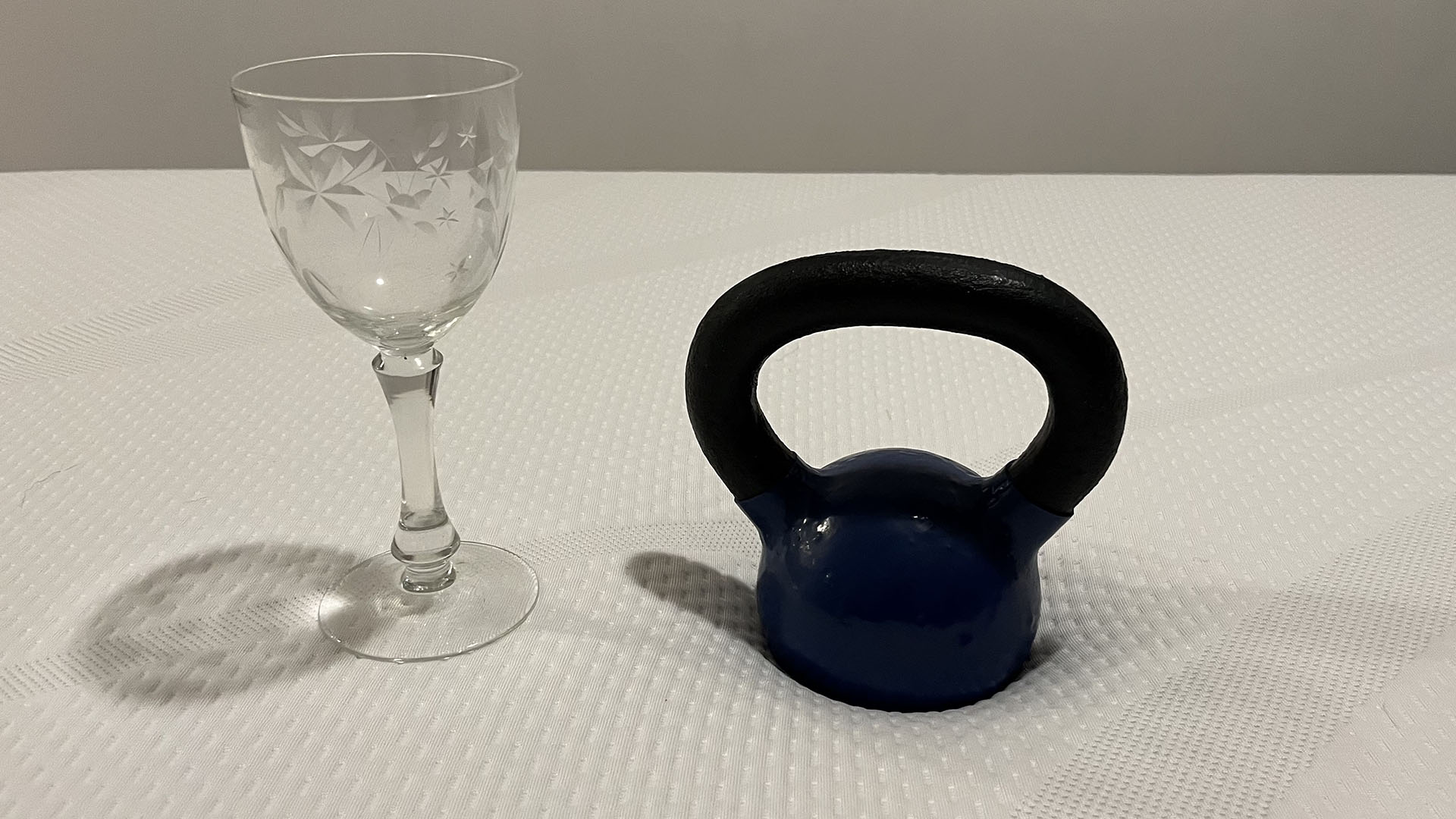
My parents slept over in this bed a few of the nights during the testing phase and didn't notice when the other person got out of bed in the middle of the night or early morning to help with my toddlers, either.
To gain a more objective view, I dropped a 12lb kettlebell near a wine glass balanced on the center of the bed. The wine glass didn't move when it was dropped, 4, 10 and 20 inches away. In fact, when I dropped the kettlebell right next to the wine glass, it only wobbled a little, still staying upright. If you're a light sleeper, the Tempur-Cloud would be an excellent choice.
Good motion isolation can also help promote a more restful sleep if you tend to toss and turn at night. That was the case for me – I usually move around a lot when I sleep, but I slept much more solidly on this mattress. When I woke up, I was in the same position I fell asleep in.
- Motion isolation score: 5 out of 5
Edge support
Edge support refers to how sturdy a mattress is around its perimeter. All of our testers said some variation of, “Whoa!” as soon as they sat on the edge of the Tempur-Cloud bed. What does that mean? As soon as their butts hit the edge of the mattress, they were surprised by how far they kept sinking, further and further down and towards the edge of the mattress.
When I stand up, this mattress height hits my mid-thigh. When sitting down, even if I position myself 10 inches or so from the edge of the mattress, I keep sinking until my butt is parallel with my knees and my legs are at a 90-degree angle or less.
So why does edge support matter? If you're short on bed space, you want to be able to use every inch of the available surface for sleeping, without fear of rolling off the mattress. Or if you're someone who likes to sit on the edge of the bed while getting dressed or putting on your shoes on, a mattress with flimsy edges probably won't allow you to do that comfortably. If the edge support of the mattress isn't good in the beginning, it's likely only going to get worse over the years.
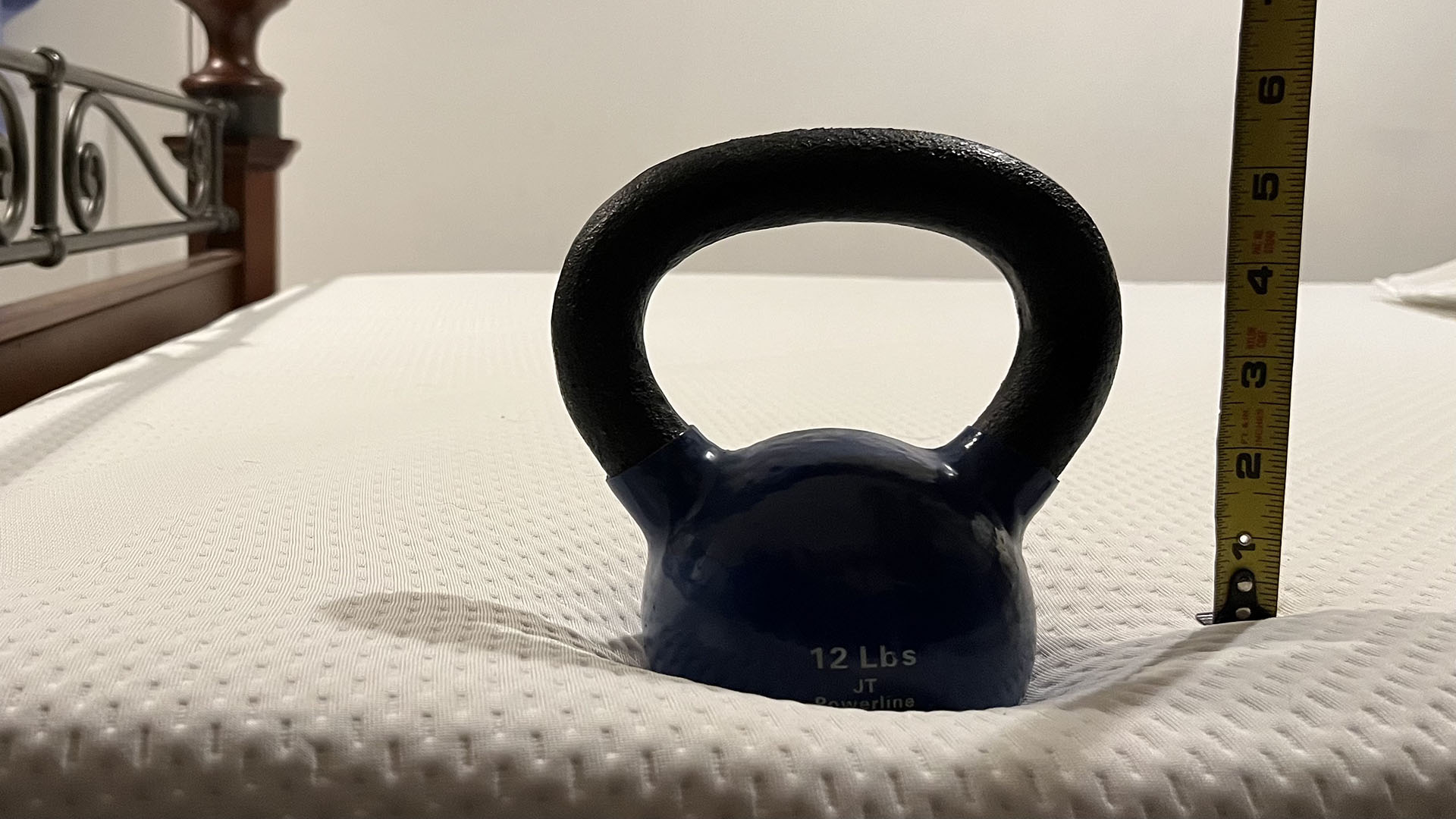
When I placed a 12lb kettlebell on the edge of the mattress, it sank in a couple of inches. That's the same sinkage as I recorded in the centre of the mattress, which is actually an acceptable result. However, the softness is exacerbated by how slow-moving the foams are. When I left my 12lb kettlebell on the edge for 10 to 20 seconds, the mattress still hadn't returned to its full height when I checked it again over an hour later.
If you are sleeping by yourself and sleep in the middle of the mattress, it might be a non-issue for you. Also note that poor edge support is more common in all-foam mattresses, so the hybrid version of the Cloud might perform better on this front.
- Edge support score: 2 out of 5
Tempur-Cloud mattress review: Customer experience
- Mattress delivered vacuum-packed, rolled and bagged
- Standard delivery is free, but no white glove option
- 90 night trial period is short, especially for the price
Tempur-Pedic offers a free delivery for this Tempur-Cloud model. After ordering online to my home in New York, it estimated delivery in five to seven business days. The mattress was delivered to my garage door compressed and rolled up, but interestingly, not in a cardboard box, as most bed-in-a-box mattresses are.
If you buy the pricier Tempur-Adapt or Breeze mattresses, white glove delivery is included for free, but that's not the case with the Cloud. I think that's a little stingy, given that it's still very much a premium priced mattress.
I noticed it was heavy (40 to 50 pounds) and kind of an awkward cylinder shape so I dragged it into my house, downstairs to the guest bedroom where I'd be testing it. With that heavy of a package, it would be nice to have a white glove delivery option, even if I had to pay extra. If you ordered the king-size models, they'd be about 80 pounds and most people would need help getting that size package from wherever UPS dropped it off into a bedroom and on a bed frame.
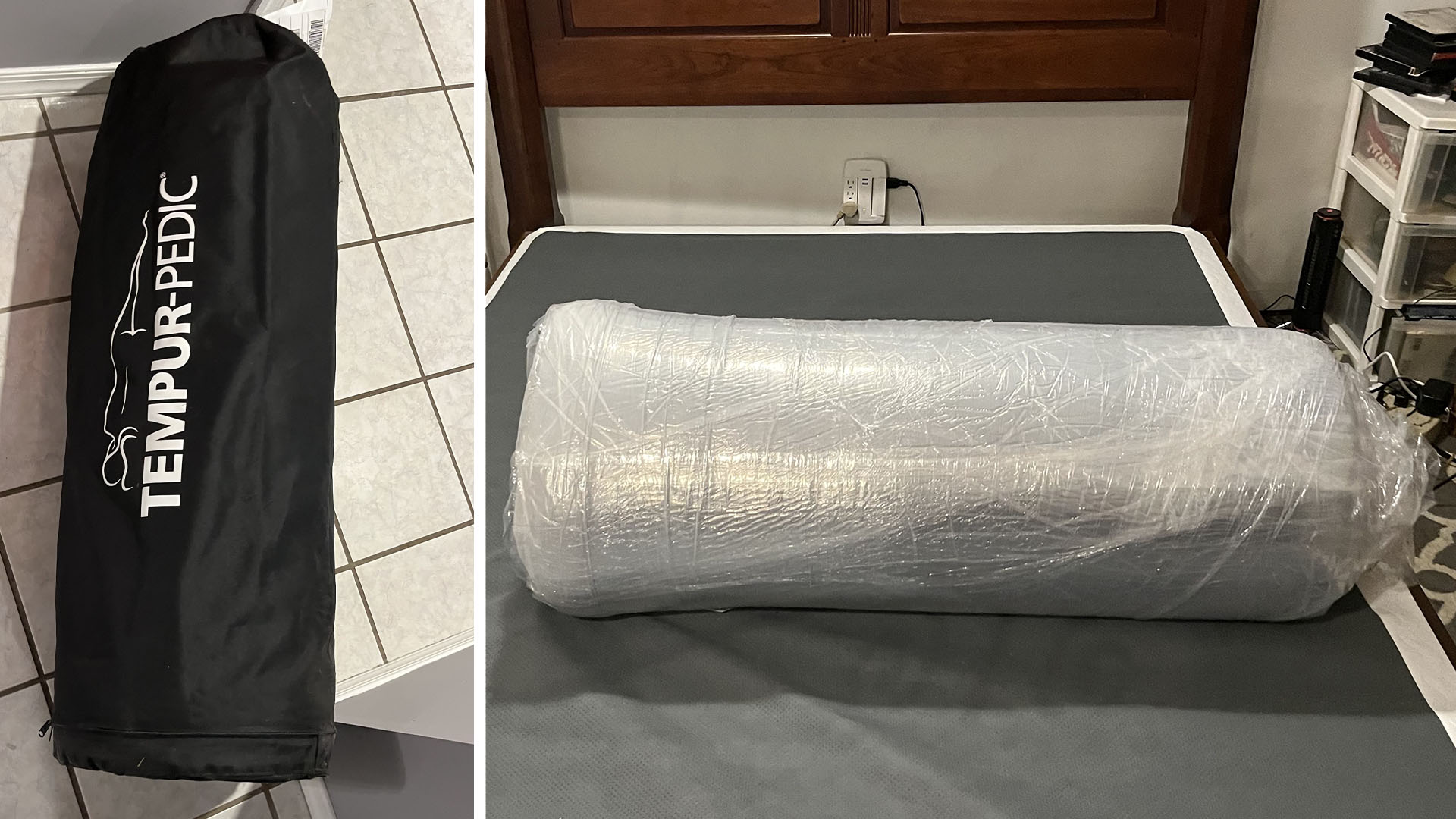
The trial is 90 nights and Tempur-Pedic recommends each customer try their mattress for at least 30 nights, partly because memory foam can take some time to get used to if you're a former innerspring mattress sleeper, and partly because it molds to your body better after a few weeks. That's about the shortest trial period of any major bed brand – the likes of Nectar and Saatva give customers a full year. If you return your mattress or exchange it within the 90-night sleep trial, you'll need to pay a $175 fee. Only a handful of brands charge for this, and this fee is particularly high with Tempur, too.
There's a 10-year full replacement limited warranty, replacing or repairing a defect within that time frame if you bought from a Tempur-Pedic authorized retailer or the site. I think it's noteworthy that the Tempur-Pedic site explicitly outlines the type of frames, surfaces and foundations that its beds are designed to be placed on. If you don't use those and want to return the product, the site says “...if purchaser uses inappropriate foundations, box springs, adjustable bed bases, or bed frames with the mattress… such will void the Limited Warranty and all other warranties.”
Tempur-Pedic says it regularly donates to “charitable organizations within our community.” At time of writing, there have been quite a few recent complaints and negative reviews captured on the Better Business Bureau website but it's difficult to tell if those products that customers were unhappy with truly fell under the warranty parameters.
- Customer service score: 3 out of 5
Tempur-Cloud mattress review: Specs
| Materials | Memory foam, other foams (hybrid version with coils also available) |
| Cover | Stretchy, not removable |
| Handles | No |
| Firmness (1-10) | Officially 'medium', I rate 5.5/10 |
| Height | 10 inches |
| Trial period | 90 nights |
| Warranty | 10 years limited |
| Price bracket | Premium |
| Queen price | MSRP $1,999 |
| Sizes | Twin, twin long full, queen, king, split king, Cal king |
| Delivery | Free standard (white glove included for pricier models, but not the Cloud) |
| Returns | $175 fee |
Tempur-Cloud mattress review: Other reviews
On Tempur-Pedic's website, the Tempur Cloud has 4.5 stars out of 5 stars from over 1,500 reviews (December 2023). The only other site I could find reviews of this model was Walmart, which pulled most of the reviews from Tempur-Pedic's site or the Better Business Bureau.
Many of the reviews of five stars for the Tempur-Cloud were for the hybrid model, which features innersprings. Price comments were positive when compared to other Tempur-Pedic mattresses and other feedback tended to be along the lines of 'worth the cost', while noting that it was expensive.
Some customers who have other Tempur-Pedics found that it was not the same quality as their other products, but noted it was a more affordable line.
Some reviewers mentioned the lack of edge support and there were a lot of comments about it sleeping hot. Complaints tended to be about it being too soft and not getting their money back through the warranty after the trial.
The Tempur-Cloud was launched in 2019, and I couldn't see many comments dealing with the long-term wear and feel of this mattress-in-a-box.
Should you buy the Tempur-Cloud mattress?
Buy it if...
✅ You love a deep 'hugging' feel: Tempur-Pedic is known for its pressure-relieving memory foam products and the customer reviews of this mattress sang the praises of this aspect of the mattress. It delivers excellent pressure relief via its contouring, squishy top layer.
✅ You're a lightweight side-sleeper: The medium feel of this mattress is a good fit for side sleepers, and it'll cradle your shoulder and hip and prevent pressure from building up. It's also great for lightweight people who need a little extra cushioning to feel comfortable.
✅ You're a light sleeper or toss and turn at night: The slow-moving foams isolate motion extremely well, which is great news if you're a light sleeper and toss and turn at night – I found I stayed in the same place when sleeping on this mattress. It's doubly useful if you share a bed and don't want to be disturbed by a partner's movements.
Don't buy it if...
❌ You're a back sleeper or a stomach sleeper: The deep, sink-in surface of this mattress isn't well suited to most back and stomach sleepers, as they'll find their hips drop in too low, putting a strain on their back.
❌ You weigh more than average: Bigger bodies need more support than this medium mattress will offer. If you weigh more than 250lbs, check our best mattress for heavy people guide for some recommendations.
❌ You like a responsive mattress that you lie on top of: This mattress' deep sinking feel that hugs your shape is perfect for some people. But if you're looking for a mattress that you lie on top of and is easy to change position on, this won't suit. Something like the Saatva Classic is similarly luxurious but has a much more traditional feel.
❌ You're on a budget: This mattress is an investment. If you're on a tighter budget, something like the Leesa Studio has a fairly similar, slow-moving feel. Or there are plenty of cheaper options in our best memory foam mattress guide.
How I tested the Tempur-Cloud mattress
I slept on the Tempur-Pedic Tempur-Cloud for most of three weeks, other than when we had overnight guests over who also tested the mattress. I normally sleep on an innerspring Saatva so I'm used to more of a traditional mattress and like that springy feel.
This mattress was slept on in a basement in the fall in New York so it was fairly cool, between 40 and 60 degrees Fahrenheit outside, but the basement is the coolest area in the house. I used a polyester/cotton blend sheet and comforter set. My parents – in their 70s – slept on it, as well as my sister who's in her 40s.
I ran tests to determine the edge support, motion isolation, and responsiveness. I asked the testers what they thought of the mattress, since they're used to sleeping on an all-memory foam mattress, Zinus, in that room. They found it comfortable overall and slept well on it but everyone seemed to prefer the Zinus mattress feel.
- First reviewed: December 2023
Diana is a trained journalist and experienced editor in the health and wellbeing and lifestyle sectors. Diana has created content for a range of leading brands including Real Simple, Bloomberg, Headspace, and WebMD.
- Ruth HamiltonHomes Editor
